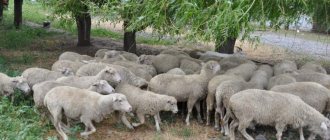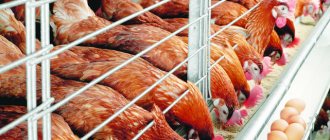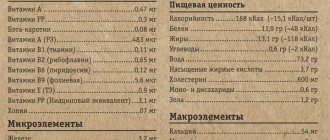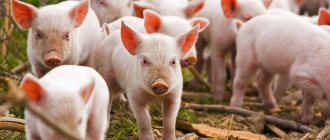Poultry breeding is becoming a promising business due to the increasing demand and consumption of meat and eggs in Russia every year. At the same time, you can also sell fluff, feathers, bones and animal droppings, which guarantees break-even production. If you have a summer house or a private house with a plot of land, to start production it will be enough to purchase an incubator , a minimum of equipment and high-quality parent stock.
Poultry meat is in greatest demand among Russian consumers and accounts for an average of 45% of total sales . The leading position is occupied by chicken meat, followed by turkey meat, whose popularity is growing every year.
The most profitable bird for breeding at home
Having decided to start poultry breeding as a business, you should decide on the type - chickens, geese, ducks, etc. The choice directly depends on the goal that the entrepreneur sets for himself and on the product he is focusing on. Let's take a closer look at who is most profitable to breed at home.
What breed of chickens is the most egg-laying for home breeding?
Chickens were the first birds domesticated by humans about 8 thousand years ago. Ancient people began to breed them, discovering such useful properties as egg production and large body weight. There are many breeds of this bird. If the goal of breeding is to obtain a large number of eggs , then you should pay attention to egg-laying chickens. It is important to purchase good laying hens and a rooster with a ratio of 1 male to 10 females.
When choosing a breed, the following criteria must be taken into account:
- Quantitative egg productivity - at least 280-300 eggs per year;
- Immunity to diseases;
- Quick adaptability to the location of future content;
- Unpretentiousness to living conditions and feed.
, bred in the 19th century, is considered one of the best breeds of laying hens Almost all modern egg breeds are obtained by crossing Leghorn with other chickens. Birds begin laying eggs at the age of 17-20 weeks and are record holders for egg production: about 370 eggs weighing up to 62 grams during the year. At the same time, the survival rate of chickens is high - 92%.
Broiler breeds - which are better
If the purpose of raising chickens is to sell meat, then you should pay attention to broilers, they quickly gain weight. These meat birds are produced by crossing different breeds and are not suitable for breeding, as they lose their properties in subsequent generations. Therefore, it is profitable to purchase new individuals of the first hybrid line from special farms, which fully mature in 70 days and are then ready for sale.
When planning to breed meat breeds, it is worth considering their features:
- The need for a balanced diet and good care;
- Predisposition to certain diseases;
- High risks of death in the first two weeks of life;
- Fattening one chicken will cost 7 kilograms of feed in two months.
Every year, as a result of crossing different species - crosses - new types of broilers arise that are superior in all respects. Among the largest types of crosses are:
- COBB-500 . A distinctive feature is the skin of a bright yellow hue. In 6 weeks, the chickens are fully mature, weigh between 2 and 2.5 kg and are ready for slaughter. The breed is resistant to diseases and has an almost 100% survival rate.
- ROSS-308 . Very fast growth - 50-60 grams per day. It is popular among household owners and farmers because representatives of the species produce quite viable offspring. Broilers reach the required weight of 2.5 kilograms by 7-9 weeks.
- ROSS-708. Leaders in early maturity: after a month the broiler already weighs the required 2.5 kilograms. At the same time, the birds are unpretentious in keeping, and their diet consists of ordinary feed.
Which breeds of ducks are the meatiest and grow fastest?
Ducks are the fastest growing birds with high growth energy. For home breeding, the most suitable breeds of meat ducks are those that can provide their owners not only with meat, but also with eggs, down and feathers. The advantages of raising ducks include:
Growth intensity and early maturity - with high-quality nutrition and proper care, ducklings gain 2 - 2.5 kilograms by the age of two months and are ready for slaughter;
- Omnivorous - no special feeding required;
- Fertility - one duck hatches up to four dozen eggs per year;
- High viability and adaptability to various conditions;
- Excellent taste and nutritional qualities of duck. The meat is rich in iron, B vitamins and high in saturated fat, which have antioxidant properties.
Let's look at the five most profitable duck breeds for the household.
- Bashkir ducks are the most common in our latitudes. They are distinguished by early maturity, resistance to disease, unpretentiousness in maintenance and rapid weight gain. Their tender meat, without a specific taste, is characterized by a small amount of fat and a large yield of muscle tissue.
- Peking ducks are considered the best among meat breeds. Due to their extremely active metabolism, they quickly gain weight. The tender and juicy meat of fifty-day-old ducklings, weighing up to three kilograms at this point, is especially valued.
- Muscovy ducks, or Indian ducks, are the largest meat breed. By three months they reach a weight of up to 5 kilograms. Their meat is considered dietary due to its low fat content. Muscovy ducks are good brood hens; they produce up to 100 eggs per year, which are in demand in cooking.
- Mulards are sterile ducks resulting from crossing Muscovy and other breeds. They occupy one of the leading places in the rate of weight gain - at 3 months they can reach a weight of 6 kilograms, while being distinguished by their economical feed consumption. It is the liver of mulards (and also barbari) that is used to prepare the delicacy foie gras.
- Gray Ukrainian ducks are distinguished by their unpretentiousness in keeping and food: they can feed on duckweed obtained independently from a pond, grass, and mixed feed. They are extremely cold-resistant, gain weight well and lay - up to 260 eggs per year.
Is it profitable to keep geese for sale?
Goose meat is not as popular as chicken or duck, which is due to the complex process of growing them. At the same time, goose meat is rich in vitamins, minerals and amino acids that produce antibodies to fight bacteria and viral infections in our body.
To breed geese you will need:
- The presence of a large area for grazing, preferably with an adjacent body of water. The main costs when breeding geese are associated with the purchase of young individuals and feed, which geese consume in large quantities. With free grazing, geese will consume more green feed or duckweed from the pond and gain weight due to them, which will help save on purchased feed;
- Having your own grain crusher, since it is more profitable to make food for geese yourself;
- It is necessary to immediately get a heavy meat breed of geese, since outbred domestic geese slowly gain weight. And in 3-4 months a purebred bird will gain more than 4 kilograms. At the same time, adult individuals reach a weight of 7-8 kilograms, and males - up to 15;
- Own incubator for breeding goslings for sale. Profit can come not only from meat, but also from the sale of purebred goslings, whose cost is quite high.
- If you have the opportunity to fulfill all the above conditions, then breeding geese can become a profitable business. Otherwise, it's better to use your powers elsewhere.
Is raising quails as a business profitable or not?
One of the main disadvantages of quail breeding is the novelty of the product for the Russian consumer, who considers quail eggs and meat exotic and prefers to buy chicken. But this is the main prospect for business development: other countries are already showing interest in this bird, which means it will soon reach Russia.
A few more undeniable advantages of quail breeding:
- Small starting capital. If you don’t set up a large farm right away, but start with a flock of 500 birds, then even with the purchase of all the necessary equipment you can spend 50,000 rubles;
- Low cost of necessary equipment. And if you make the cages and brooder yourself, you can further reduce costs;
- Fast payback. Occurs approximately from the fifth month after the acquisition of quails. At this time, laying hens achieve stable productivity, and excess males can be sold;
- Easy bird care. A herd of five hundred heads requires up to 4 hours a day to care for, which can be handled by one person without any problems;
- Small area for breeding. Quails are very compact; 20 sq.m. will be enough. with multi-level placement. At the same time, it will be convenient to care for the birds and there will be space for storing food;
- High consumer properties;
- Low level of competition.
Quails are capable of laying eggs 1.5-2 months after hatching, while the bird lays up to 300 eggs per year . The productivity of quails decreases by the year, then the time comes to put them on meat - the weight of one carcass is 200-350 grams. The cost of one egg is 1.5-2 rubles, and the carcass is 60-90 rubles. This way you can roughly calculate the income from your herd. Don't forget to take into account the costs of buying food and lighting.
Is raising turkeys as a business profitable or not?
Turkey farms, which originated in America, have recently become popular in Russia, where raising turkeys at home is gaining momentum. Dietary poultry meat is highly appreciated by Russian consumers. It contains an ideal balance of amino acids and a record content of phosphorus and iron.
Let's figure out what is needed to breed this type of bird:
- A spacious room that needs to be insulated for keeping birds in winter; A large area with grass so that the birds can walk and the turkey poults can browse;
- Special feed containing additives for bone growth and strengthening, vitamins and medicines for disease prevention;
- A separate place for keeping chicks that require special care and attention; The initial investment to start a business is about 200,000 rubles. This includes the purchase of turkey poults, the construction and equipment of a spacious poultry house, feed and veterinarian costs.
What are the benefits of business:
- Turkeys grow quickly and gain weight up to 25 kilograms depending on the breed;
- Year-round demand for meat if sales points are established in advance;
- The profitability of the business is about 90%, and the payback period is a year and a half;
- You can get your first profit within six months: you can sell meat, eggs and raised young animals.
Features of broilers
Broilers are artificially bred hybrids with the aim of producing dietary meat in the shortest possible time. In homesteads and on farms, the most popular crosses at this time are KOBB-500, ROSS-308, ROSS-708, which at the age of two months reach a weight of 2.5 - 3 kg.
That is, they gain weight quite quickly. But we must remember that broilers, although very early in maturation, differ from other types of poultry in that they will not show good productivity indicators if the diet is not balanced.
That is, only grass or grain is not suitable for hybrids. When fattening, the dry type of feeding with dry mixtures - ready-made mixed feeds - will be acceptable.
Registration of private household plots
If you are planning to raise poultry as a business on a personal or rented plot of land and do not want problems with the state, you should think about registering a personal subsidiary plot (LPH).
Private household plots mean non-entrepreneurial activities for the production and processing of agricultural products. All products manufactured by the owner are considered his property and can be sold. At the same time, only members of one family participate in private household plots. Non-relatives are only included if they live with you.
You can organize private household plots on your own or rented land if you have issued permits. You can keep animals and birds or grow vegetables immediately after obtaining the right to land, without registering private household plots as a legal entity.
Local government bodies are responsible for registering private household plots. Therefore, submit the following information to the administration of the locality to enter data about your private household plot in the household ledger:
- FULL NAME. and date of birth of the owner or tenant of the land plot, information about family members;
- Cadastral number of the plot and its area;
- Number of animals and/or poultry;
- List of agricultural machinery, equipment and vehicles.
After registering a private household plot, develop your business and legally sell your products. To do this, obtain a certificate from the administration stating that the goods were produced in private household plots. In this case, the proceeds are not subject to taxes and VAT, regular payment is only for land tax.
Which chickens are suitable for a beginner
Poultry farming is interesting because every day you can see the result - fresh eggs with a bright yolk, fast-growing young animals, additional amount of dietary meat for the table. But how can you breed poultry if you have neither knowledge nor experience in handling it? There is no particular problem here:
- Start with broilers . Try to produce just one batch per season and you will immediately decide whether it is interesting or not, whether you have the desire and opportunity to do this business in the future.
- Next spring, buy young crossbred chickens . This step will require spending money and time on building a chicken coop. Try to immediately build a high-quality room with minimal heat loss in winter. Try keeping the bird there for two or three years. Only after this can you understand for sure whether you need this problem and care in your life.
- If you like birding, you can spend money and buy a dozen purebred chickens with a cockerel at the age of one month . As they grow up, they will get used to you and will delight you with their existence for many years.
- It doesn’t matter whether you have your own farm or are trying to raise poultry in your country house . If you start to succeed, there will always be time and opportunity to do this interesting thing.
Excellent 1
Preparing the room for the incubator and keeping the birds
For comfortable keeping of chickens, it is recommended to have their own premises with an adjacent territory, located away from noise sources. Organize a spacious poultry house so that the chickens do not feel crowded. Divide it into zones: one for laying hens, another for broilers, and a third for chickens. Set up a special walking area. Create comfortable conditions for chickens in the poultry house :
- Good lighting, which helps increase egg production;
- Comfortable temperature is in the range of 10-20 degrees, for chicks - about 30;
- Insulated floor, strewn with straw and sawdust;
- A container of sand or ash to help the chickens keep themselves clean. Clean the room once a week and disinfect it once a month;
- Good ventilation - birds need fresh air;
- Convenient feeders and drinkers, perches and nests
Designate a separate room for the incubator . It should be warm (18-20 degrees), dry and well ventilated. The windows in the room must be darkened to allow the eggs to be visible. Set up a table for ovoscopy, laying eggs in trays and removing hatched young animals.
There are two ways to keep chickens: floor-based and cage-based.
Arranging a walking area
Laying hens need physical activity for better egg production. Therefore, they need a place to walk (aviary). You can buy a ready-made mesh enclosure or create one yourself. It is better to place it on the eastern side of the chicken coop - on the side where the sun rises. We place a manhole in the building so that birds can easily enter the walking area.
The fence of the enclosure should be mesh so that sunlight penetrates through it. Having natural light is important for hens (talking about laying hens).
The height of the fence should reach 150-180 cm. Then the birds will not be able to fly over the fence and scatter across the area.
In the enclosure under a small canopy you need to install equipment: drinking bowls, feeders, boxes with sand and ash.
Buying an incubator
For home breeding of birds, purchase special equipment - an incubator - for artificial breeding of chicks . The characteristics and functionality of the device will help your business become successful and profitable.
Which incubator is better to choose?
Before purchasing an incubator, decide on the number of eggs. It is worth loading eggs with a reserve, because some of the eggs will be rejected, and some will turn out to be cockerels.
There are three types of incubators:
- Domestic. Loading from 10 to 280 eggs, compact dimensions. Suitable for a small household.
- Farmer's. Loading from 300 to 500 eggs, automatic systems and multifunctionality.
- Industrial. Loading from 1000 eggs, automated system for large production.
Now let's look at the functions that will help the stable development of the enterprise:
- The automatic mechanism for turning eggs in the incubator will eliminate the need to be near the device and manually move the eggs;
- Electronic thermostat that quickly responds to any temperature fluctuations;
- Plastic or foam material of the device. Polystyrene foam provides thermal insulation, but breaks easily. Plastic is stronger, but needs insulation;
- The power supply to the incubator should not be interrupted, so choose models with a connection to a battery;
- Buy incubators with warranty service, manufactured to strict standards;
- If you plan to breed waterfowl in the future - ducks and geese - choose models with a moisture meter.
Feed
When breeding broilers, it is important to choose the right feeding system, which will allow the chickens to quickly gain meat and bring their weight to the desired level.
2 ways to feed meat birds:
- extensive;
- intensive.
The extensive fattening method does not require large expenses - it is suitable for entrepreneurs who do not have the money for large investments. Chickens are given compound feed and regular grain with various additives - boiled potatoes, cake and meal, vegetables, herbs, meat and bone meal. In the first 2-3 months, feeding is high-calorie, then the energy value of food decreases (chickens should not be overfed).
Intensive fattening requires additional investments, but this technique is better suited for breeding broilers. The birds are kept in cages and fed with ready-made feed. She moves little and grows quickly.
Purchasing a parent flock of chickens
In the poultry breeding business, the most important thing is a high-quality parent flock that meets the following requirements:
- High egg production to collect the required batch within a day;
- The correct ratio of females and males is 1 rooster per 10 hens;
- The birds are young and disease-free;
- Compliance with breed parameters;
Poultry nutrition must comply with standards and be balanced in the content of necessary elements. Therefore, take care of vitamins, premixes and other additives in advance:
- Choose industrial feeds carefully, as some may not be suitable. You can reduce costs and make the grain mixture yourself.
- Chickens need calcium, so add chalk, charcoal or salt to their diet to improve digestion.
- You can calculate the amount of feed required for a flock based on the daily norm for one chicken of 130-150 grams.
Industry Features
The share of homestead farms accounts for more than a third of eggs and poultry produced in the country. Of course, some of it is used by farm owners, but the lion's share ends up on the market. And the sale of products gives a noticeable increase to the family budget, because maintenance costs are significantly lower than profits. And there are certain reasons for this:
- Food waste from the kitchen, garden, and grain are used for fattening Natural food from reservoirs;
- keeping poultry does not imply exorbitant costs for the construction of a poultry house and equipment;
- Poultry farming can be practiced in any region of the country , even remote ones.
Recently, elements of industrial technologies have been gradually introduced into the practice of home poultry farming, new crosses have appeared, and this makes it possible to obtain products all year round.
Sales of products
Let's consider several options for selling chicken meat and eggs:
- Sales of products to shops and supermarkets. Large orders will bring more profit to the household;
- Own point of sale. Open a point at the food market or offer products to other private traders;
- Supplies to HoReCa establishments. Restaurants will willingly purchase natural and high-quality products at an affordable price;
- Sales to private individuals in neighboring communities. Organize a specially equipped car that will come to the city on certain days;
- Advertisements on poles, in social networks, on sites like Avito; Participation in trade fairs where you can find retail and wholesale buyers.
Staff
To organize a small farm you will not need many workers. At the start, the herd will be 400 heads - 1 hired employee will monitor this number.
It is necessary to organize the delivery of food, all necessary products to the farm and transportation of the finished product to the buyer. Therefore, a driver (with a car) will be required.
An accountant will prepare reports and document flow. You can find a specialist remotely by contacting an accounting firm.
At first, the functions of a sales manager will be performed directly by the businessman.
When organizing a household, the owner himself can do the work - this will reduce monthly expenses. But when expanding the farm, workers will have to be hired.
How much do you need to invest at the start?
Initial costs vary from 400 thousand to 1.5 million rubles, depending on the initial herd size , rental premises and other factors. Let's look at the main expense items:
- Purchase of young animals. A laying hen will cost 80-250 rubles, a broiler - 120-210 rubles;
- Business registration. Registration of private household plots is free, but you will have to spend money on an agreement on veterinary services, permission from the SES and Fire Supervision, a conclusion from Rospotrebnadzor, etc.;
- Creation and equipment of a chicken coop on your own land plot or repair and preparation of rented premises;
- Purchase of equipment and inventory;
- Feed for the herd;
- Salaries to employees, if you plan to hire;
- Various additional costs.
Equipment
After a place for the poultry house has been found, the building itself needs to be erected. Specialized materials and construction plans are available for sale. If your budget allows, you can order a ready-made poultry house from professionals.
In order to save money, you can do it simpler: during construction, use available building materials (boards, slate, brick, cinder block, other types of building stone).
In the chicken coop we organize:
- nests;
- perch;
- vestibule;
- feeders and drinkers;
- shield for collecting litter;
- walking area.
The poultry house must be insulated and protected from precipitation. Inside you need to equip a ventilation system, install fluorescent lamps or IR lamps. If there is a large flock, automatic drinkers and a food supply system are installed in the chicken coop.
If the business is focused on selling meat, you need to set up an area for poultry slaughter and buy refrigeration units for storing the product.
Poultry cutting line (chicken, turkey, duck) 1500 heads per hour, “Compact”
Negotiable price Buy
Poultry farm vs bazaar
In the collective consciousness of Russian residents, the idea that one should go to the market to find low prices is firmly rooted. In fact, this has not been the case for a long time. Where are the real savings without sacrificing quality? At poultry farms!
It's all about the wholesale scale of production. Chickens, turkey poults and other chicks are hatched there in hundreds and even thousands. Why is pasta cheaper in a hypermarket than in a small store near your home? For the same reason, chickens are cheaper from the factory. And there are always the same prices, which are usually indicated on the website. And the seller at the market may demand more if you seem too trusting to him.
Only at a poultry farm you are guaranteed to be sold the desired breed or hybrid of poultry. Buying second hand is always a lottery. And even if you buy the same chickens or goslings from a poultry farm on the market from your car, you are already overpaying for space, delivery, etc.
If you nevertheless bought chicks at the market, do not immediately let them into the common poultry house. Let them undergo a 10- or 15-day quarantine in a separate room. If you introduce an infection, there is a high risk of death of the entire livestock. Be careful!
Do you want Peking duck or musky duck?
Two varieties of ducks are popular among summer residents: Peking and Muscovy. It’s a shame, but you can breed Peking ducks only if your house is on the outskirts. Otherwise, there is a high probability of problems with neighbors: these birds are quite noisy. It’s a pity, because Peking ducks, especially broiler hybrids, are large, fatty and quickly gain weight.
If you want duck meat, but don’t want to argue with other summer residents, get musk ducks. They are also incorrectly called Indian ducks. These don't quack, but hiss, and then only if they get angry. But they have their own characteristics that are important to know.
Firstly, musk ducklings do not eat in the first days of life, and begin to eat only 3-4 days after hatching. Secondly, they need moving food, so you will have to sprinkle chopped boiled egg on an inclined board to make the crumbs bounce.
And finally, “Indochkas” grow more slowly than their Beijing relatives. Be patient - musk drakes can reach 7-8 kilos, a worthy result!
Chickens
Feeding chickens is slightly different from the diet of adult birds. On the first day, the chicks' food should be small cereals, cottage cheese, and a boiled egg. From the third day you can give greens little by little. All mashes are made fresh, after an hour they become unfit for food. The feeders are cleaned of residues and rinsed with a solution of potassium permanganate. Gradually, the amount of feed is increased, vitamins and minerals are introduced.
Until two months of age, only crushed cereals are given.
To breed young animals, you need to get a hen or buy an incubator. Only fresh eggs can be placed in it, the storage temperature of which is at room temperature. A prerequisite for egg fertilization is the presence of a rooster.
It would be good if the equipment has an automated egg turning system, humidity and temperature control. A few days later, an ovoscopy is performed, where it is clearly visible which egg is fertilized and which one should not be expected to produce a chick. The survival rate of young animals with a hen is much higher than without one. But egg breeds of chickens do not have this instinct.
Preparing a place for chickens
Chickens need warmth, light and good food. Therefore, placing them in a large box or a special brooder, they are heated with an infrared lamp, lowering the temperature gradually - 5 degrees weekly. At the age of 21 days, in warm weather, the chicks can be walked in an open area. They monitor the behavior of the chicks in order to correctly regulate the heating temperature and the availability of water.
Drink and feed for chickens
The drink is slightly acidified with food acid (for example, citric acid) due to the fact that the acid-base balance of the stomach has not yet been formed. Compound feed is selected according to age or fed with crushed cereals, cereals, nettle greens or dandelion leaves. But when fed with special food, they get sick less often.
The birds are kept in a warm special brooder for up to 8 weeks, then they are transferred to a place where adults are kept. At approximately 180 days of age, egg laying will begin.
How to care for a hen
Special attention will only be required for the first 2 weeks. During this time, little ones who do not fit under the heap must be taken under a lamp at night so that everyone can warm up. But it will be better if the family initially has its own premises on the street, which has some requirements:
A lamp for night heating should be installed in the corner of the room. Kvochka herself understands when the chicks are cold and takes them into a room where there is additional warmth. She herself chooses a place near the lamp so that those chickens that do not fit under it are closer to the heat emanating from the heating device.
As for the mother turkey, her front feathers fluff up so much that they can warm up to 30 goslings or ducklings, which are much larger than turkey chicks. But you shouldn’t leave them without an additional source of heat, hoping for a “hot” turkey. Too many chicks under one mother risk “suffocating” from the temperature of the hen and other chicks, despite the sufficient fresh air.
Important
Not every summer resident has the courage to kill a chicken for soup on his own. In this case, you will need someone's help. Think in advance who you will contact. If you are a weak-hearted and compassionate person, it may be better to buy meat at the store.
A feather pillow is also easier to buy for money. Firstly, to fill it you need a lot of down and feathers: a couple of laying hens will not be able to provide so much material. Secondly, turning “raw” feathers into safe, soft and comfortable stuffing with a long shelf life is not an easy task. Not every handmade fan can handle it.
Handle poultry with care. Frightened birds may peck or pinch painfully. Most often, males display defensive aggression, especially if they have a “harem” of females. Don't let children tease roosters, geese and drakes.
Documents for a poultry farm
Any business involves collecting the necessary documentation. Therefore, you will have to run around to get the necessary papers. Thus, poultry farming requires the presence of a veterinary certificate and a quality certificate; without them, it is simply impossible to sell meat.
A thorough study of the sales market will allow you to find the most profitable way to organize sales. For particularly advanced farmers, opening your own store would be an excellent option. Here he will be able to display all available goods. However, there is also a more simplified option - selling to stores. Here it is enough to acquire a customer base and deliver goods to them within the specified time frame.
However, it is important to understand that meat for sale must have the appropriate appearance. Therefore, you will have to carefully study not only the aspects of keeping and feeding birds, but also study competent slaughter technology.
Organizational aspects
Organization of production requires appropriate investments. So, at the initial stage it is necessary to think about the place where the birds are kept. It is best to rent it, because construction will cost much more. In addition, it will require a special investment of time, which will also negatively affect the development of the business.
Construction should begin after the start of production, and then only if it really begins to generate stable income for its owner.
Once found, the premises will need to be reconstructed and then improved. At the initial stage, you simply cannot do without the following purchases:
- cells;
- feeders;
- heating devices, especially when it comes to the cold season;
- drinking bowls;
- equipment for cleaning the barn.
The amount of inventory required must be calculated based on the total production volumes.
Quail
If a farmer has a large pasture on his property, then the choice of birds before him is simply enormous. However, what about those who have limited territory? In this case, there is also a solution - quail breeding. These birds are the most compact for breeding in a small area. About 50 heads can easily be placed on one square meter.
Walking is also not a prerequisite, although it is better to try to organize it. After 2.5 months, the small chick grows into an adult, ready for slaughter. The weight of the carcass usually does not exceed 300 grams. However, it is worth remembering the high dietary qualities. It is because of them that the bird is in demand.
Organization of production
Now is the time to decide on the choice of premises. It is best to find a suitable option and rent it. Why not build a new one, you ask? It is not profitable. Construction requires a large sum, commissioning will require a huge package of documents, which will take a lot of time. You will begin to build buildings when you begin to receive a stable income.
We found the premises, examined its condition, and calculated the costs of its reorganization. The next point is the purchase of equipment. The equipment depends on the type of birds you choose. In any case, you will need:
- cells;
- feeders;
- drinking bowls;
- chicken warmers;
- water containers;
- equipment for cleaning the premises;
- transport.
Signs of disease
The first signs of disease are obvious, but only for those who regularly monitor chickens. They become lethargic, lose their appetite, and sometimes diarrhea. Only a qualified veterinarian can make a diagnosis, but many diseases can be easily distinguished by the nature of bowel movements and characteristic symptoms. And they are often treated with broad-spectrum antibiotics.
A sick bird must be isolated from a healthy bird to avoid an epidemic in the yard. The poultry house is disinfected along with its equipment. The diet includes vitamins, herbs, and minerals.
To prevent fluff eaters, they place ash and sand in which the chickens “bathe.”
Breeding laying hens for eggs: business plan and profitability
It is enough to know about the correct diet, create appropriate living conditions and provide high-quality food. There are, of course, many more nuances, but everything, as they say, comes with experience.
The most common direction in poultry farming is chicken breeding. As a rule, it is aimed at obtaining eggs. Some breeds produce both eggs and meat. Geese, ducks, and turkeys are raised mainly for meat.
Each direction has its own nuances, advantages and disadvantages. We talk about all this on the pages of our online magazine. Intuitive navigation, structured, conveniently designed articles with photos and videos allow you to extract the maximum of useful information based on real experience.
Which bird to choose for breeding is up to you. If you need eggs, you should choose the breed that is most adapted to the conditions of your climate zone.
Slaughter, egg collection and sale
If you raise poultry for meat, then it is advisable to purchase a special unit for mass slaughter. Manually - it will be a long process and very unpleasant. Therefore, when describing the early production of poultry for meat, I said that only large farms with a multimillion-dollar turnover could do this.
I do not recommend keeping such a bird in large quantities. Maximum 300–400 heads of various species.
Laying hens should be checked several times a day. The eggs are collected in clean containers, even though they will not all be clean. After this, they must be sorted into cardboard or plastic grids, which must be purchased in advance.
Eggs must be collected several times a day.
If you are an officially registered farmer, then you have the opportunity to pack in containers that have your own company logo. Advertising on containers is very productive.











